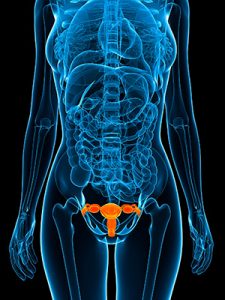 Pelvic organ prolapse is a condition that involves the dropping of pelvic floor organs in women. The problem affects about a third of all women at some time in their life. The pelvic floor is comprised of muscles that form a hammock across the pelvic opening. Normally, the muscles and other tissues keep the pelvic organs in place. Such organs include the uterus, rectum, bladder, small bowel and vagina. Most women develop the condition after childbirth or as they age. Obesity, pelvic organ cancers and removal of the uterus can also lead to the disorder. Affected women may experience pain during intercourse, backaches and urinary problems. This article provides detailed information about pelvic organ prolapse.
Pelvic organ prolapse is a condition that involves the dropping of pelvic floor organs in women. The problem affects about a third of all women at some time in their life. The pelvic floor is comprised of muscles that form a hammock across the pelvic opening. Normally, the muscles and other tissues keep the pelvic organs in place. Such organs include the uterus, rectum, bladder, small bowel and vagina. Most women develop the condition after childbirth or as they age. Obesity, pelvic organ cancers and removal of the uterus can also lead to the disorder. Affected women may experience pain during intercourse, backaches and urinary problems. This article provides detailed information about pelvic organ prolapse.
Causes
- Damage to the supporting tissues; damage to ligaments, muscles, and connective tissues that hold pelvic organs in place causes the organs to move from their original positions.
- Giving birth; having a baby increases the possibility of prolapse occurrence later in life. Vaginal childbirth is strongly linked to stretched and weakened support organs around the pelvic area.
- Reduced levels of estrogen; estrogen levels tend to lower during the menopause stage. Low estrogen levels result in less collagen fibers to aid in connecting pelvic tissues.
- Surgical removal of the uterus; removal of the uterus leaves organs around the pelvic region with little support.
- Others; constipation, obesity, normal aging and respiratory problems.
Symptoms
Different bodies respond differently, but most women report the following symptoms:
- A bulge in the vagina ranging in size from small to very large
- Problems while emptying the bladder
- Increased discomfort when lying down
- Discomfort and inability to stand for long periods of time
- Sharp pain during sexual intercourse
- Lower back pain
- Pressure and discomfort in areas around or on the vagina and pelvis
- Bleeding and spotting from the vagina
- Problems with the bowel such as occasional constipation
Treatment
There are several options to consider in alleviating the disorder:
- Surgery to restore the descending pelvic tissues back to their initial positions
- Applying topical cream or using a hormone replacement therapy
- Avoid straining the bowels during movements
- Practicing Kegel exercises that help strengthen the muscles that keep pelvic organs in position
- Wearing a pessary inside in the vaginal canal to reinforce the pelvic organs
Types of Prolapse
- Rectocele; the rectal walls protrude towards the vagina
- Uterine prolapse; uterine walls slide into the vagina
- Cystocele; the bladder falls into the vaginal canal
- Enterocele; small bowels herniate into the vaginal walls
- Vaginal vault prolapse;
Female Urology
Female urology is a medical specialty that focuses on the treatment of female genitourinary disorders. It addresses problems such as pain during intercourse, fecal inconsistence, bladder pains, vaginal prolapse and recurrent urinary infections.
For more information concerning pelvic organ prolapse, please call St Pete Urology for a consultation with a board certified urologist.
